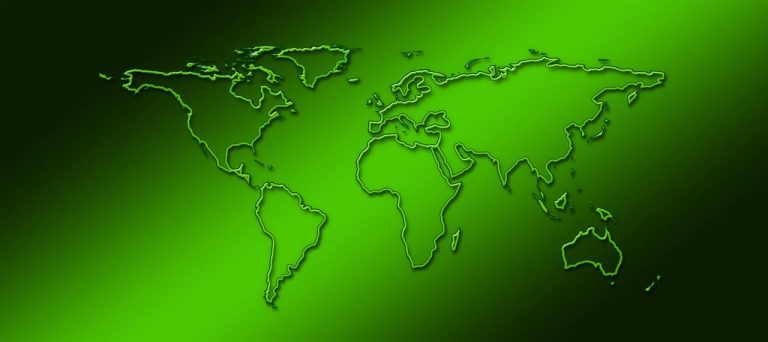
Philippine Economy Amidst Political Changes: A Comprehensive Overview of Recent Developments
The Philippine economy has been a subject of global interest, especially in light of recent political changes that have influenced its trajectory. As a rapidly developing nation in Southeast Asia, the Philippines offers a unique mix of opportunities and challenges that are pivotal in shaping its economic landscape. This blog post delves into the current state of the Philippine economy, assessing how political shifts are impacting its growth and development.
The Current Economic Landscape
The Philippines has experienced a steady growth trajectory over the past decade, marked by a surge in its service and industrial sectors. According to the World Bank, the country’s GDP growth rate averaged around 6% annually from 2010 to 2019, making it one of the fastest-growing economies in the region. However, the COVID-19 pandemic and subsequent political changes have introduced new challenges.
As of 2023, the Philippine economy is still recovering from the impacts of the pandemic. The agriculture sector, long a staple of the economy, has faced setbacks due to climate change and natural disasters. Meanwhile, the service sector, particularly in areas of tourism and business process outsourcing (BPO), is rebounding.
Impact of Political Changes
Political stability and policy direction are critical factors influencing economic performance. The recent presidential transition has brought about significant policy shifts aimed at stimulating economic growth. The new administration has prioritized infrastructure development, aiming to enhance connectivity and attract foreign investments. Notably, the “Build, Build, Build” program, initiated by the previous administration, continues to be a focal point of economic strategy.

Furthermore, the government’s commitment to reducing poverty and narrowing the income gap is evident in its social welfare programs. These initiatives aim to enhance consumer purchasing power, thereby bolstering domestic demand, a crucial component of economic resilience.
Challenges Faced by the Economy
Despite the positive outlook, several challenges persist. Inflation remains a pressing issue, driven by fluctuating global oil prices and supply chain disruptions. The central bank has been active in implementing monetary policies to curb inflation, but external factors pose significant threats.
Moreover, political changes have sometimes led to policy uncertainties, affecting investor confidence. The need for stable governance and a clear economic roadmap cannot be overstated. As noted by the International Monetary Fund, consistent policy implementation is crucial for sustained economic growth.
Opportunities for Growth
The Philippines benefits from a young and dynamic workforce, which is a significant asset in driving future economic growth. The government’s investment in education and skills development is crucial in harnessing this potential. Additionally, the rise of digital technology presents new opportunities for innovation and entrepreneurship.
The country is also strategically positioned to benefit from regional trade agreements. Participation in the ASEAN Economic Community (AEC) and other international trade pacts opens up markets and enhances competitiveness.
Takeaways
In conclusion, the Philippine economy stands at a critical juncture amidst political changes. While challenges such as inflation and policy uncertainties persist, there are ample opportunities for growth driven by a robust workforce and strategic investments in infrastructure and education. The government’s focus on inclusive growth and poverty reduction is commendable and could pave the way for a more resilient economic future.

As the Philippines navigates these complexities, it remains essential for policymakers to maintain a balance between immediate economic relief measures and long-term strategic planning. The continued engagement with international economic communities and adherence to sound economic policies will be key in ensuring sustainable growth. For more insights into the Philippine economy, the Asian Development Bank offers comprehensive resources and analyses.
The Role of International Relations
International relations play a pivotal role in shaping the Philippine economy, particularly in terms of trade and foreign investment. The country’s strategic geopolitical location makes it an attractive partner for both Eastern and Western economies. Recent shifts in global trade policies have prompted the Philippines to diversify its economic partnerships.
The strengthening of ties with neighboring ASEAN countries has facilitated regional cooperation, enabling shared economic growth. Moreover, the Philippine government’s efforts to bolster relations with non-traditional partners, such as Russia and the Middle East, aim to expand its trade network and secure new markets for its exports.
Investment in Infrastructure
Infrastructure development remains a cornerstone of the Philippine economic strategy. The government’s continued investment in roads, bridges, and public transportation systems is expected to enhance connectivity, reduce logistical costs, and improve the overall business environment. According to NEDA, these investments are crucial for sustaining long-term economic growth.
Furthermore, public-private partnerships (PPPs) have been instrumental in advancing infrastructure projects. These collaborations not only bring in much-needed capital but also leverage the expertise of private entities, thereby ensuring efficiency and innovation in project implementation.
Digital Transformation and Innovation

As the global economy becomes increasingly digital, the Philippines is keen on embracing technology and innovation. The rise of fintech, e-commerce, and digital services is reshaping the economic landscape, offering new avenues for growth and development. Government initiatives aimed at fostering a conducive environment for tech startups are encouraging entrepreneurship and investment in the digital sector.
Moreover, the expansion of internet connectivity and the promotion of digital literacy are essential in bridging the digital divide, ensuring that the benefits of technology reach all segments of the population. Such efforts are vital for building a competitive and inclusive digital economy.
Environmental and Sustainable Development
Sustainability is increasingly becoming a priority for the Philippine government, recognizing its importance in achieving long-term economic stability. The country is vulnerable to natural disasters, and climate change poses significant risks to its agricultural sector and overall economic health.
Efforts to promote sustainable development include investments in renewable energy, reforestation projects, and the implementation of stringent environmental regulations. The government’s commitment to the United Nations Sustainable Development Goals underscores its dedication to achieving economic growth while safeguarding the environment.
Takeaways
The Philippine economy is navigating a period of transformation, driven by political changes and global economic trends. While challenges remain, the country’s strategic initiatives in infrastructure, digital transformation, and sustainable development present significant opportunities for growth.
By fostering strong international relations, encouraging private sector participation, and prioritizing environmental sustainability, the Philippines can build a resilient and diversified economy. Continued focus on these areas will ensure that the Philippines not only recovers from recent setbacks but also thrives in an increasingly competitive global market.

The journey ahead requires a balanced approach, integrating immediate policy responses with long-term strategic planning. With a clear vision and commitment to inclusive growth, the Philippines is well-positioned to achieve sustainable economic progress and improve the quality of life for its citizens.
Role of Education in Economic Growth
Education plays a critical role in driving economic growth and development in the Philippines. A well-educated workforce is essential for innovation, productivity, and competitiveness. The government has recognized the importance of investing in education, implementing reforms aimed at improving the quality of education and expanding access to all levels of schooling.
Programs such as the K-12 educational reform have been introduced to align the Philippine education system with international standards, preparing students for both higher education and the workforce. Additionally, partnerships with private educational institutions and international organizations are enhancing the quality of education and providing students with opportunities for global exposure.
Healthcare and Economic Development
The healthcare sector is another crucial component of the Philippine economy, with significant implications for overall economic development. A healthy population contributes to a more productive workforce, reducing absenteeism and increasing efficiency. The government has been working towards universal healthcare, aiming to provide equitable access to essential health services without financial hardship.
Investments in healthcare infrastructure, such as hospitals and clinics, as well as initiatives to increase the number of healthcare professionals, are part of the country’s strategy to improve public health outcomes. Furthermore, the integration of technology in healthcare services, such as telemedicine, is expanding access and improving service delivery.
The Role of Small and Medium Enterprises (SMEs)

Small and medium enterprises (SMEs) are the backbone of the Philippine economy, contributing significantly to employment and GDP. The government has been actively supporting SMEs through various programs that provide access to financing, capacity building, and market opportunities. Initiatives such as the MSME Development Plan are designed to enhance the competitiveness and productivity of these enterprises.
Support for startups and entrepreneurship is also on the rise, with the establishment of innovation hubs and business incubators providing a nurturing environment for new business ideas. By fostering a culture of entrepreneurship, the Philippines is creating a dynamic and resilient economy capable of adapting to changing market conditions.
Tourism as a Pillar of Economic Growth
Tourism is a vital sector in the Philippine economy, known for its potential to drive growth and generate employment. The country’s rich cultural heritage, diverse natural attractions, and warm hospitality make it a popular destination for international travelers. Efforts to enhance tourism infrastructure, marketing campaigns, and regulatory frameworks are key to unlocking the sector’s full potential.
Despite challenges posed by the pandemic, the tourism industry is on a path to recovery. By leveraging digital marketing and sustainable tourism practices, the Philippines aims to attract high-value tourists and promote inclusive growth in local communities.
Takeaways
The Philippine economy is at a pivotal point, with numerous opportunities and challenges shaping its future. Political changes, global economic trends, and domestic policy initiatives are influencing its path to development. By addressing key areas such as education, healthcare, SMEs, and tourism, the Philippines can build a robust and diversified economy.
Continued collaboration between the government, private sector, and international partners will be essential in realizing the country’s economic potential. As the Philippines navigates this complex landscape, a focus on sustainable and inclusive growth will ensure a prosperous future for all its citizens.






